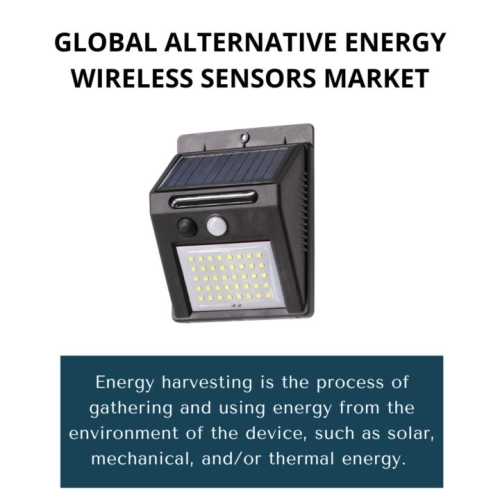
- Get in Touch with Us

Last Updated: Apr 26, 2025 | Study Period:
Small devices that are often deployed in locations where a lack of energy severely inhibits key activities make up wireless networks.
During continuous use, the energy source of these devices depletes quite quickly, hence it is crucial to regularly replace or recharge the power sources. It might be exceedingly challenging to carry out these tasks using traditional techniques at times.
Utilising the energy that is present in the environment all around us could be an appealing answer to this issue.
Energy harvesting is the process of gathering and using energy from the environment of the device, such as solar, mechanical, and/or thermal energy.
The network's nodes are all well-equipped with energy collecting machinery that can draw power from renewable energy sources in the environment.
The harvested energy can be used as a supplement to the primary power source of the device or even sometimes directly as a primary source

The Global Alternative Energy Wireless Sensors market accounted for $XX Billion in 2021 and is anticipated to reach $XX Billion by 2030, registering a CAGR of XX% from 2022 to 2030.
The launch of SolarPrint's dye-sensitized solar cell (DSSC) technology will increase the potential for next-generation energy harvesting for wireless sensors.
According to Solar Print, their DSSC technology pushes the limits of current PV solutions and significantly improves the power output performance of indoor PV solutions. It is integrated into wireless sensors to boost harvesting efficiencies of commercial applications.
According to Solar Print, this technology gives the potential to scale more power-hungry wireless solutions, such multi sensors, than has previously been achievable with existing solar technology.
It also enables higher functionality. A building can be equipped with wireless sensors to track everything from humidity and temperature to air quality and lighting levels.
| Sl no | Topic |
| 1 | Market Segmentation |
| 2 | Scope of the report |
| 3 | Abbreviations |
| 4 | Research Methodology |
| 5 | Executive Summary |
| 6 | Introduction |
| 7 | Insights from Industry stakeholders |
| 8 | Cost breakdown of Product by sub-components and average profit margin |
| 9 | Disruptive innovation in the Industry |
| 10 | Technology trends in the Industry |
| 11 | Consumer trends in the industry |
| 12 | Recent Production Milestones |
| 13 | Component Manufacturing in US, EU and China |
| 14 | COVID-19 impact on overall market |
| 15 | COVID-19 impact on Production of components |
| 16 | COVID-19 impact on Point of sale |
| 17 | Market Segmentation, Dynamics and Forecast by Geography, 2022-2030 |
| 18 | Market Segmentation, Dynamics and Forecast by Product Type, 2022-2030 |
| 19 | Market Segmentation, Dynamics and Forecast by Application, 2022-2030 |
| 20 | Market Segmentation, Dynamics and Forecast by End use, 2022-2030 |
| 21 | Product installation rate by OEM, 2022 |
| 22 | Incline/Decline in Average B-2-B selling price in past 5 years |
| 23 | Competition from substitute products |
| 24 | Gross margin and average profitability of suppliers |
| 25 | New product development in past 12 months |
| 26 | M&A in past 12 months |
| 27 | Growth strategy of leading players |
| 28 | Market share of vendors, 2022 |
| 29 | Company Profiles |
| 30 | Unmet needs and opportunity for new suppliers |
| 31 | Conclusion |
| 32 | Appendix |